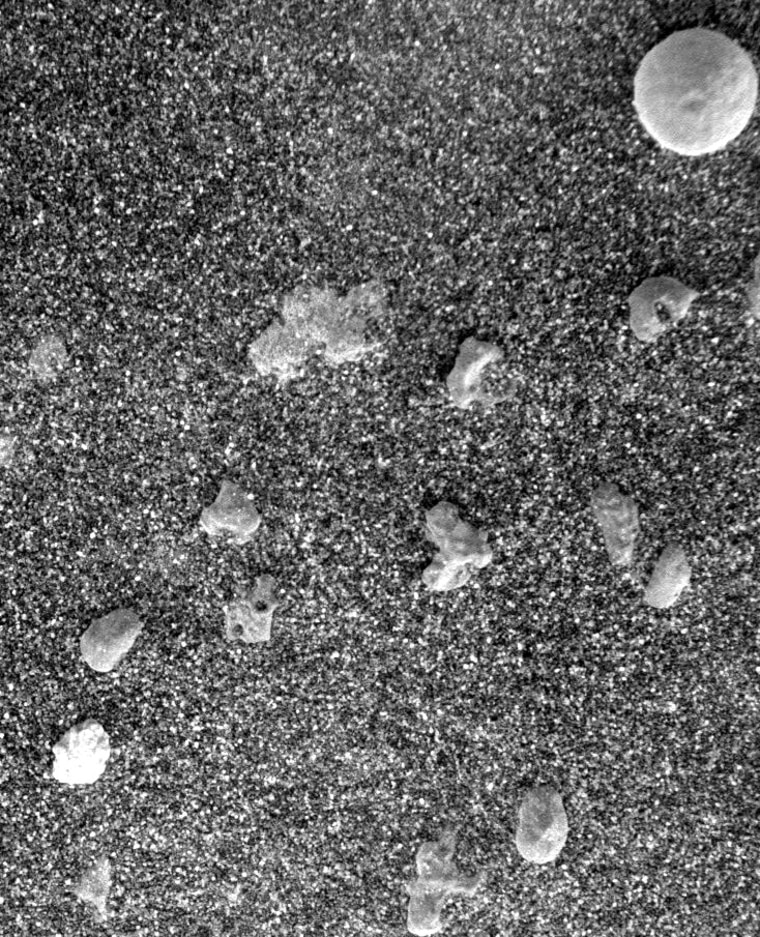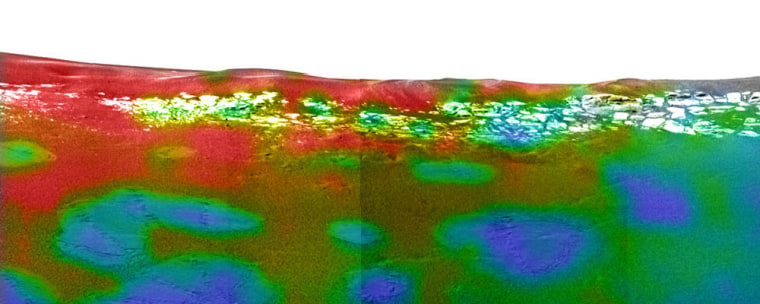NASA scientists plan to drive the Opportunity rover toward a fascinating outcrop of Martian rocks on Thursday, in the most ambitious bid so far to discover evidence of sufficient water to have sustained life on the Red Planet.
Mission managers at NASA’s Jet Propulsion Laboratory here told reporters on Wednesday that if Opportunity’s 6-yard (6-meter) drive to the rocky outcrop is successful, they will later attempt to dig below the Martian surface for the first examination of the planet’s subsurface soil.
Opportunity, which rolled off its lander over the weekend in a crater half a world away from its twin robotic rover Spirit, already has sent back microscopic images of the soil immediately in front of it.

Scientists have been fascinated by the small spherical particles of rock seen amid sandy soil that contains hematite — a mineral that on Earth forms in the presence of iron-rich water.
But principal science investigator Steven Squyres said they had yet to piece together the evidence found so far. He noted that the first area Opportunity examined had a relatively low concentration of hematite. “The stuff we area looking at, at this point, doesn’t really tell us much ... about water because we haven’t hit the hematite sweet spot yet,” he said.
“The next thing we are going to do with this rover — it’s going to start tomorrow — is to head toward that outcrop. We are going to be moving into materials that are progressively more and more rich in hematite,” he said.
Digging a trench
Mission manager Mark Adler said the next stage in the planned three-month exploration of Mars would be a complex “trenching” operation.
Scientists on Earth will command Opportunity to rotate one of its six wheels into the soil at the rocky outcrop, push the dirt out in front of it, and then move back and look into the hole using the rover’s spectrometers and microscopic imager. The instruments could determine the composition of the underlying soil — and perhaps even find new clues in the search for water on Mars.
The $820 million twin-rover mission's main goal is to help researchers determine whether liquid water could have persisted on ancient Mars long enough for life to develop.
'Brain surgery'
While Opportunity sent back pictures of its immediate surroundings, the scientific team working on Spirit embarked on the final stages of what mission managers have called “brain surgery” on its corrupted computer memory.
Exploration work by Spirit, which landed in the Gusev Crater on Jan. 3, has been idled for almost two weeks because of an onboard computer problem.
Adler said scientists were on Wednesday carrying out a four-hour process to delete thousands of files from its flash memory, and then reboot and reformulate its computer system
If all goes well, Spirit should be back to its scientific work on Thursday, Adler said.
